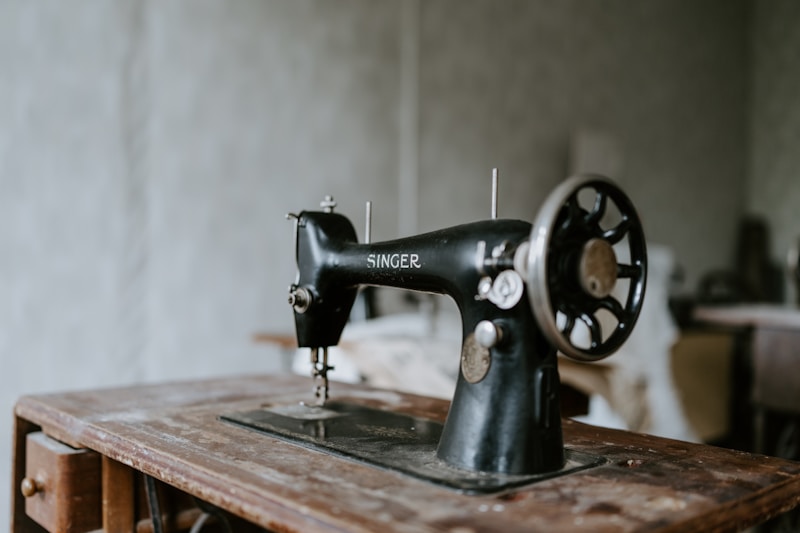The Art of Seam Basting: Mastering a Key Technique in Sewing
Understanding Seam Basting
Seam basting is one of the vital techniques in sewing that can make a significant difference in the quality of your finished garments. This technique involves temporarily securing fabric pieces together before the final stitches are made. Whether you're dealing with delicate fabrics or complex patterns, mastering the art of seam basting can enhance your sewing skills tremendously.
What is Seam Basting?
Seam basting refers to the process of temporarily holding two or more layers of fabric together with long, loose stitches. This is often done to ensure that all layers align properly and that the desired shape is maintained before the final sewing is executed. Basting can be done by hand or with a sewing machine, and it is particularly useful in the following scenarios:
- When working with slippery or stretchy fabrics
- When aligning multiple pieces of fabric, especially in complex designs
- To help prevent shifting during the final sewing process
Why is Seam Basting Important?
Many sewists underestimate the importance of basting, but it can save a great deal of time and effort in the long run. Here are some advantages to using seam basting:
| Advantage | Description |
| Alignment | Basting helps in keeping fabric layers aligned, ensuring that the final stitches will also be straight and consistent. |
| Prevention of Shifting | Secure layers together to prevent any shifting, which is especially important when working with patterns. |
| Ease of Adjustment | With temporary stitches, adjustments can be made easily before committing to final sewing. |
| Reduced Fraying | Basting can help to hold fabric edges together, reducing fraying during the sewing process. |
How to Baste: Step-by-Step Guide
Now that you understand the importance of seam basting, let’s dive into the step-by-step process of how to do it correctly.
Materials Needed:
- Fabric pieces you intend to sew
- Thread and needle (for hand basting) or basting stitches on a sewing machine
- Tailor pins (optional)
- Measuring tape and fabric scissors
Step 1: Prepare Your Fabric
Before you start basting, ensure your fabric pieces are clean and ironed flat. This preparation makes alignment easier and contributes to better overall results.
Step 2: Pin Your Fabric
If desired, use tailor pins to hold the fabric in place before basting. This can help maintain alignment and prevent any movement while stitching.
Step 3: Choose Your Basting Method
You can either hand-baste or machine-baste. For hand basting, use a long stitch length, about 5 to 6 stitches per inch, to easily remove after the final sewing. For machine basting, set your machine to a long stitch setting.
Step 4: Baste Your Fabric
Start basting along the seam, making sure to keep stitches even and loose. Avoid sewing too close to the edge, as you want to ensure you can easily remove the basting stitches later.
Step 5: Check Alignment and Adjust
After basting, check the alignment of your fabric. If adjustments are needed, it is easy to unpick a few basting stitches and reposition the layers.
Step 6: Final Sewing
Once you are satisfied with the alignment, proceed to sew the final seams. Remember to remove the basting stitches once the final sewing is completed.
Common Questions About Seam Basting
Here are some frequently asked questions regarding seam basting:
- Can I use glue for basting? While some people opt for fabric glue, traditional basting with thread is often recommended for more flexible adjustments.
- What type of fabric is best for basting? All types of fabric can be basted; however, basting is particularly useful for slippery or stretchy fabrics.
- How long should my basting stitches be? Length varies, but aim for 5 to 6 stitches per inch for hand basting to make removal easy.

Tips for Effective Seam Basting
Here are some tips for enhancing your basting technique:
- Always use contrasting thread so that you can easily identify and remove the basting stitches.
- Practice on scrap fabric to gain confidence before basting the final pieces.
- Be patient; taking the time to baste properly can save you significant effort later on in the sewing process.
Conclusion
In summary, mastering the art of seam basting can significantly improve your sewing outcomes. This technique not only helps ensure accurate alignment but also allows for quick adjustments while keeping fabric layers secure. Remember to take your time when basting and don’t hesitate to make adjustments as needed. As you continue to hone your sewing skills, incorporate seam basting into your overall process, and you may find your projects turning out more professionally than ever before.
Whether you're a beginner or an experienced sewist, understanding and applying seam basting techniques can elevate your sewing game. Happy sewing!